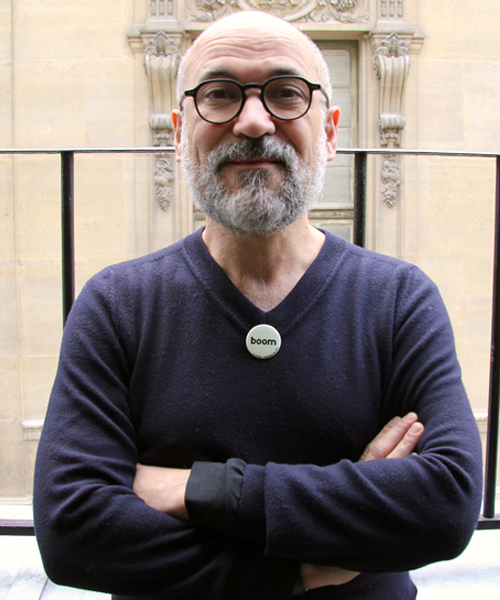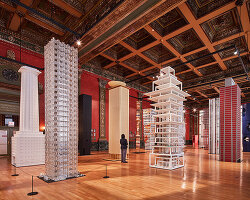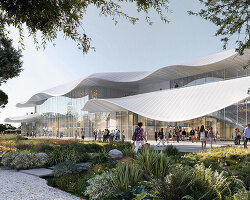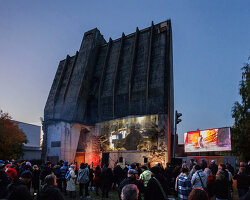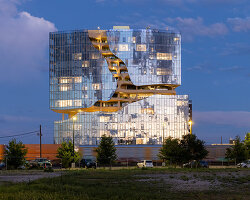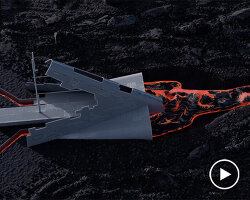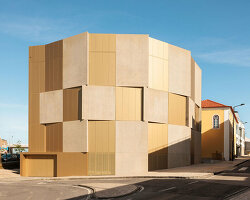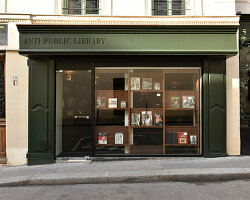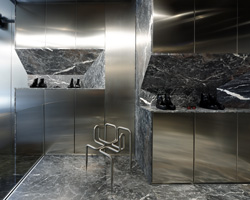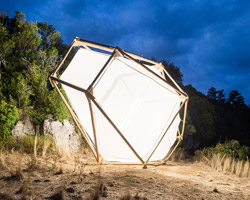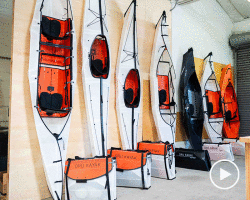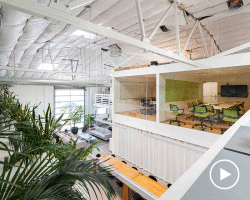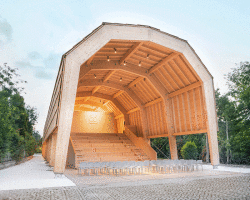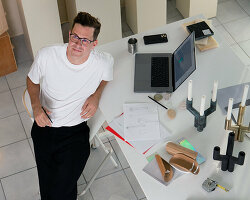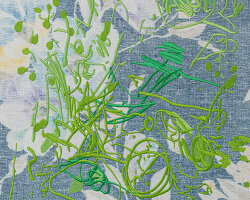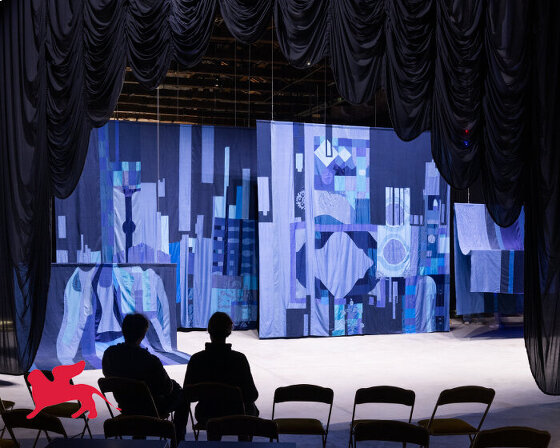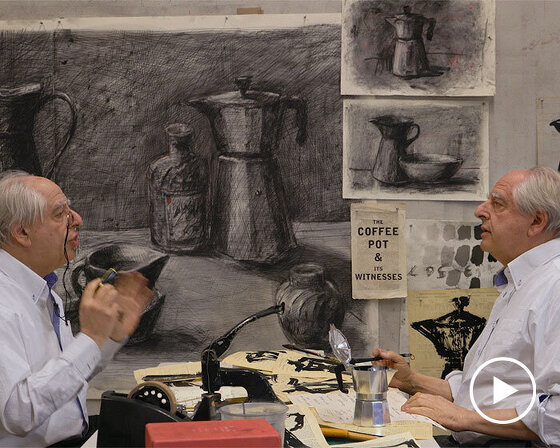to define the paris-based and portugal-born architect, artist, and designer didier faustino is not an easy task. his body of work, guided by different dichotomies — body and space, thinking and doing — is comprised of installations, buildings and chairs, amongst others. on a recent trip to paris, designboom visited him at his newly renovated and still-under-construction parisian studio where he discussed his radical and subversive approach to our contemporary paradigm, the questions he aims to generate regarding the role of creation, our position as subjects and citizens, and even his love for music.
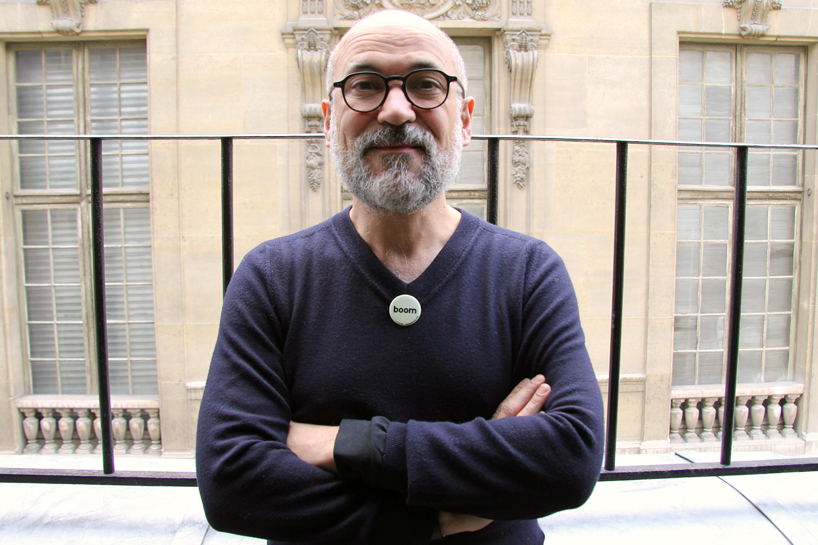
image © designboom
designboom (DB): you recently moved to this paris location…
didier faustino (DF): yes, before we used to be in a 150 sqm open space loft with high ceilings. when we found this vertical building we fell in love, even though the space was complete crap. but this gave us the opportunity to do what we wanted, so it became a project on its own. we cut here, opened there… and although it’s still not finished, we can proudly say that we are the architects of our own space.
on the other hand, we are opening another studio in lisbon — which is the big one. so we shrunk the studio in paris in order for it to host the conceptual part of the projects and we have lisbon to materialize them as we have a big site there. so basically we have the mini japanese office in paris and the big berlin loft in lisbon.
in our contemporary paradigm, you don’t need to have the brain and the body in the same place — we actually have both of them in a perpetual idea of movement. for example, we don’t have any projects in paris right now but we work them here. this probably comes from my childhood. when I was a kid I grew up between portugal and france and was always jumping from one to another. this is a reflection of my work; not totally art, not completely architecture; or totally art, totally architecture. maybe even design at certain points.
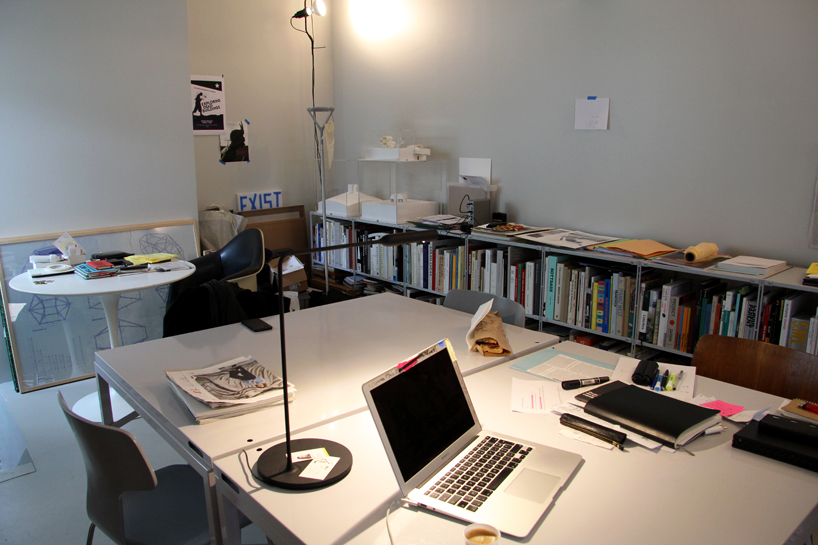
image © designboom
DB: how many people work in your studio?
DF: ten people. in lisbon right now we have two people but the idea is to maintain everything and everyone in continuous movement, maintain this idea of faire et penser which in english means thinking and doing. for me, it’s very important to know and understand that some projects come from the thinking and go to the doing, while others are different and start from the doing.
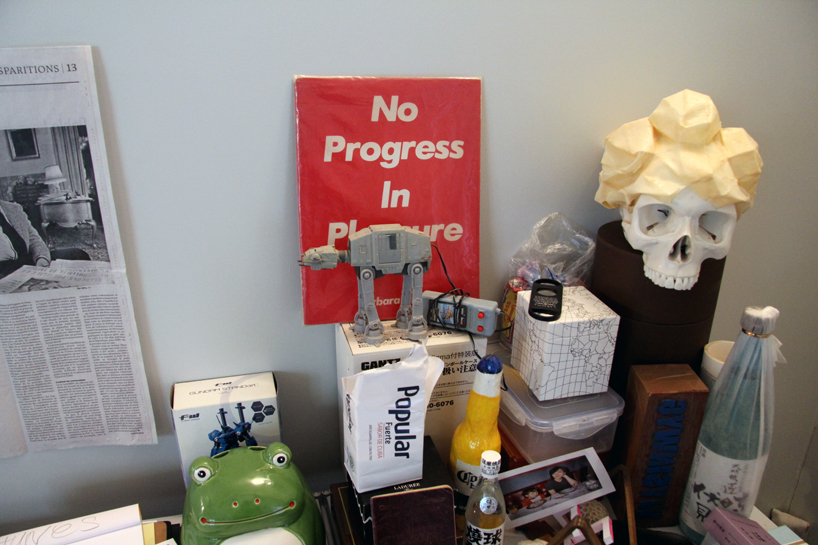
image © designboom
DB: how did your fascination with the body begin?
DF: I am an architecture graduate and did different exhibitions and curated some of them. my first projects were already talking about the body as I was fascinated with performance art and would follow religiously the work of chris burden, gordon matta clark, marina abramovich… I was interested in how space was used rather than how it was built, I went more to build situations rather than spaces. the ideas behind them included dealing with weakness, fragility, the unexpected; or situations where time, space and society ended up constructing something solid. my work — I think — is more about social links, disconnections, and interactions rather than form. so at the beginning, I was interested in the body, its fragility, considering not only its physical aspect but also its spiritual and political side; the body as a group and as a system.
the body is the link, it’s the point where all situations exists, it’s what can make the situations happen. and it can be an individual body or collective body, a wild or domestic one. I think that architecture thinking is always related the body. all the situations we are currently developing need to implicate at one time or another the visitor, the users, the spectator. the discipline has evolved to this implication.
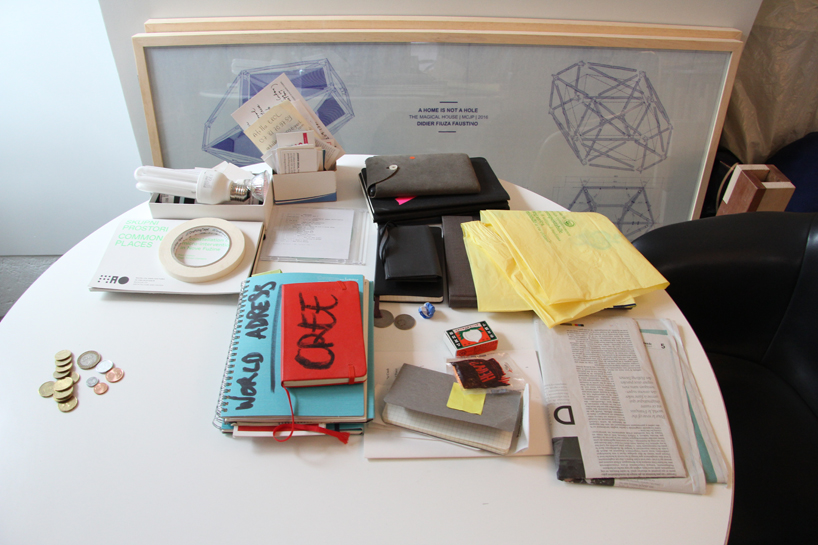
image © designboom
DB: do you treat your projects differently?
DF: I don’t make a big different between my art and architecture projects. I know now after years of working that the difference is probably the economy. I will say architecture is a conclusion of economy: you do something to conclude it. art on the other hand, is an economy of exploration where you don’t know where you go. the thing is that for me I can’t separate them in practice. if we do a project of conclusion (with a client), we need to have at the same time the thought of the experience. we aim to create projects that are equilibrated throughout both disciplines.
I like breaking points, to see the disjunctive side of things, when things can show something different. sometimes clients come with ideas that are not their ideas, with desires that are not their desires. people come with ideas that are linked to habits, to tradition, to society. the thing is like, ‘are you sure about this or can we look a bit deeper into who you really are or how you spend your time.’ most of my projects are not built because clients are not willing to take this responsibility.
but sometimes we just do projects for ourselves where the work is not linked to a client. we do them for ourselves, for the idea. with them we don’t think if they’re right, we don’t even interrogate, we just have a necessity to get them out.
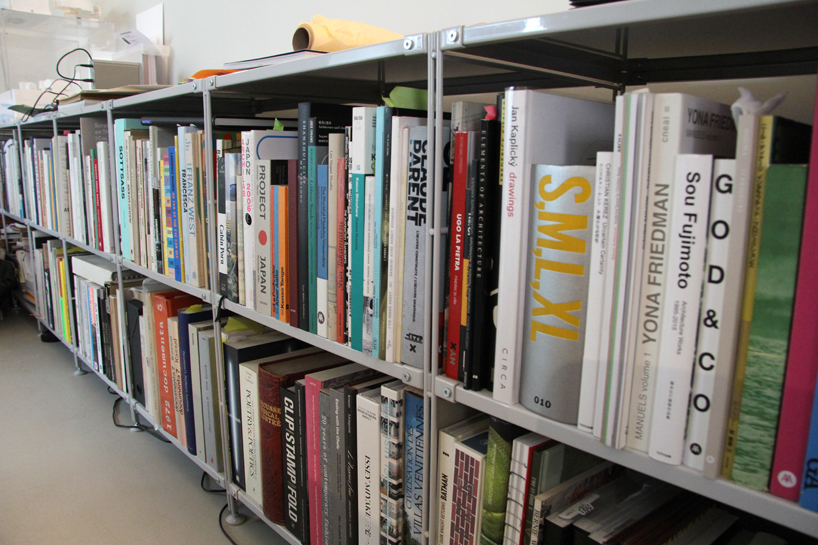
image © designboom
DB: what is the difference between the body in architecture and the body in art?
DF: in architecture, I have the feeling that when we talk about the body we talk about a generic body. in art, the body is something where time and the evolution of the body itself are part of everything. the body for architecture is strangely more an abstraction because an architects’ procedure is about the fantasy of the body. architecture works on a prototype which in the end is the same finished product. there is no time for experimentation or interacting as this comes after the project has been finished.
but I don’t have a strong opinion on this because the body is an ambiguous situation as it can be many types of bodies. the body is not something that it stable or neutral; we cannot say that this body today will be the same tomorrow. the body is something with adaptable and variable characteristics. it cannot be constrained.
when facing a project I always think about the body; which is the body that will use it, that will occupy, that will wear it, etc. this is always the starting question. and what kind of situation we’re looking at; is it an individual or collective one? private? intimate? group? I believe the questions we try to solve and the hypothesis we put on the table generate questions for the user too. and that is what interests me. questioning ourselves as bodies, as entities. that is how the body became the pretext to do projects.
my work is about the interface, the in between, it can be about separating or connecting. the question for me is how to join people and make them interact. to do that you need to push them the other way, sometimes this feels dangerous, but the objective is always to bring them back together.
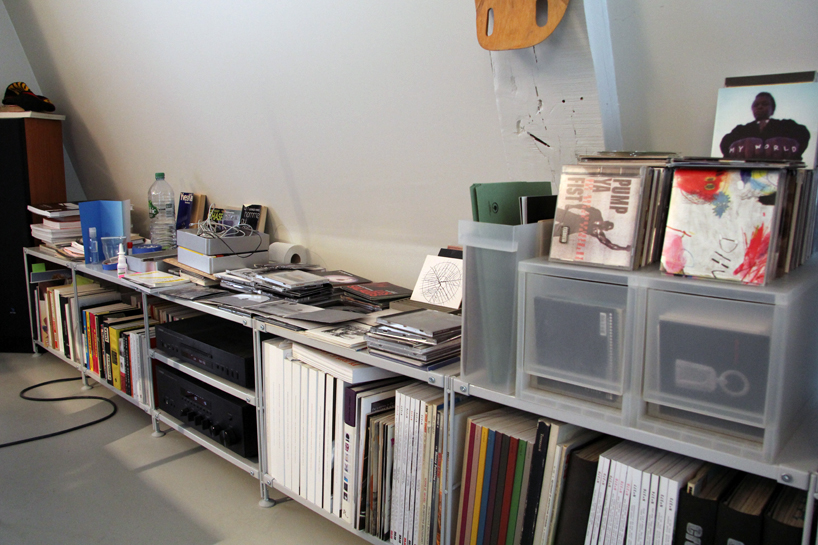
image © designboom
DB: so it’s also about creating objects that generate questions and reflections…
DF: yes, with the pieces I create many processes can be involved once they are in used. for example, there’s a chance you will learn from them, or you will need to adapt to them. you can also negotiate with them.
I recently had a show in paris where we decided with the gallery to show my design work. so I designed around 50 ways of sitting and I showed 9 of them. it was a concept that generated an interface between body and space. sometimes they looked like they could be chairs, and sometimes they didn’t. it was more about how we deal with ergonomics and about space and body. some were about not constraining the body while others were more about actually not letting it be in the same position for a prolonged period of time. it was about fixing movements.
the thing about the body is that it is a piece of movement, we cannot say it can be still. even internally our body is always moving and it never stops. we are movement. so the exhibition was about how we can build situations that create the feeling or the illusion or the reality of suspended time and falling in between situations. and that is my definition of seating and all the elements I created to show it are interfaces.
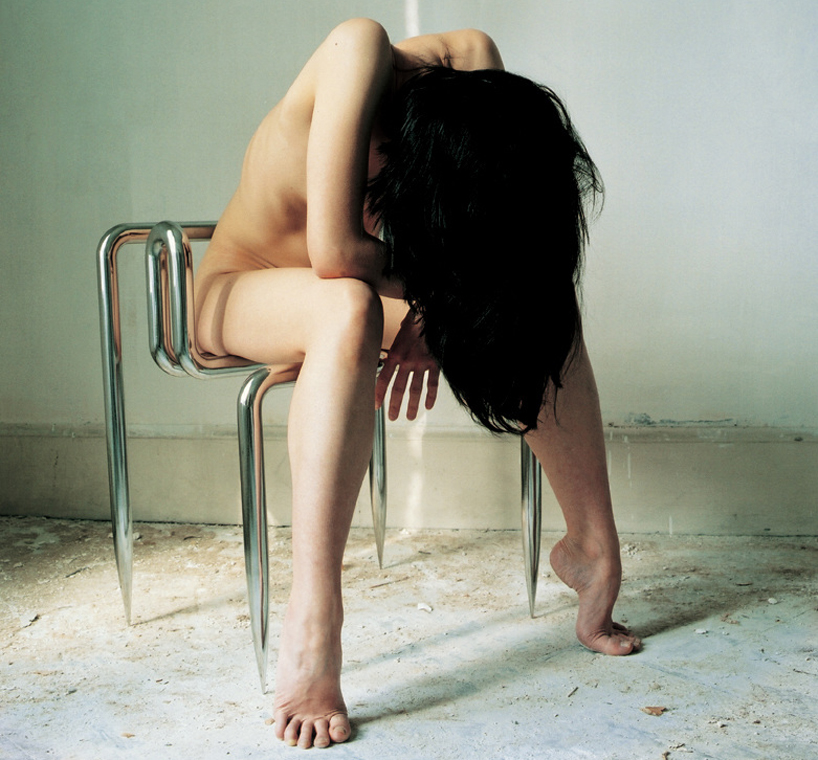
(continues…) I have a project called ‘love me tender’ that many people don’t understand; it’s a chair with thin legs and people say its aesthetics tend to sadomasochism and porn. but actually, the question was ‘what would happen if I use this chair’, because you can recognize it’s a chair. will it be dangerous or problematic for the floor? can I really move it? what will happen? how can I sit on it? so each time you want to sit on it, so many questions arise, even before using it.
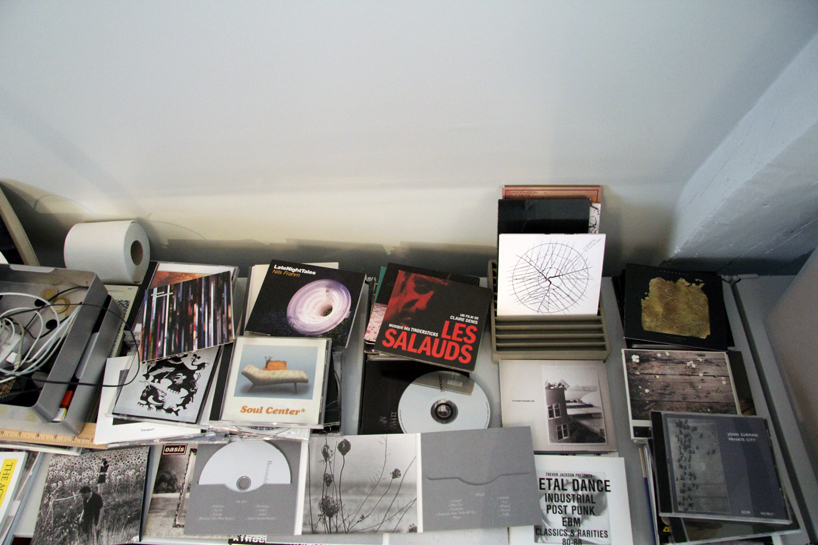
image © designboom
DB: is music part of your creative processes?
DF: music is very important, it’s part of my life and it’s part of every life. life needs music. I have two different types of relationship with music. the first one is about pleasure, personal life and my intimate relation with it. the second one is more related to my intellectual development and my way or working. music stimulates my brain more in terms of finding reasons. to be a person under control I need some elements that are artificial and that are linked to the rhythm and fluids of my body. music is the point to counterbalance all these things that I’m always controlling. so I work all the time with music.
I like sequence music, I like repetitive music, I like many styles. concrete music, hip hop, punk music, you name it. yesterday I was buying some vinyls and I found kraftwerk’s reactivity, the original one — german print. 1973 — and I was like, fantastic.
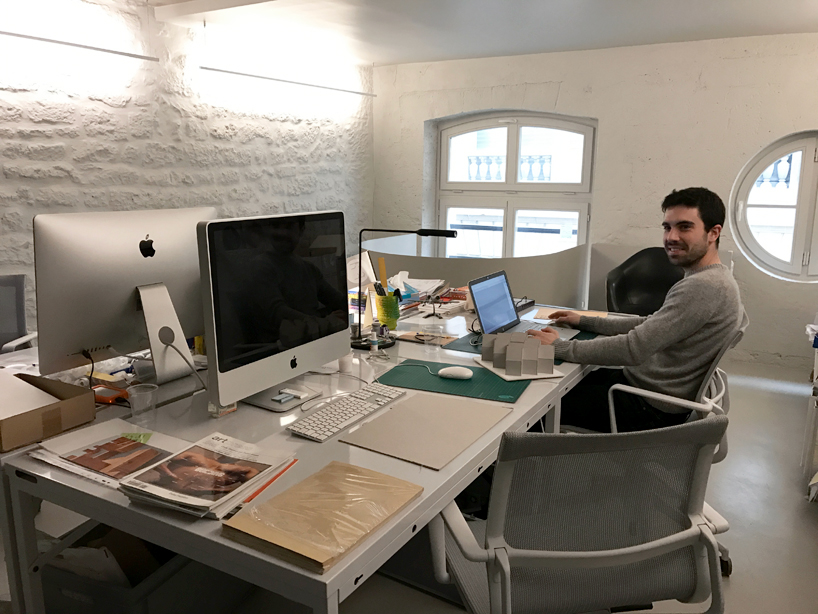
image © designboom
DB: I noticed you wrote exist all around your office with tape…
DF: this happened during the last project I did in mexico (democracia portatil) and it was about doing something with hope. I was reading the newspapers and seeing what was going around the world with syria and I was thinking what was the meaning of what I was doing, having doubts about my work. I mean, I cannot talk about the body, and about its weakness and fragility, and having all these thoughts about producing situations and looking and questioning without taking part of the world itself. and I was in this kind of depressed moment where I thought that what I was doing was only for the elite, and why I couldn’t touch others and change the world. and I was wondering how I could get my message out there to a larger audience. so I just took this tape and started to write the word exist as the exit signs reminded me of it. it’s just a simple message, not for me, but just as a piece of hope for everyone.
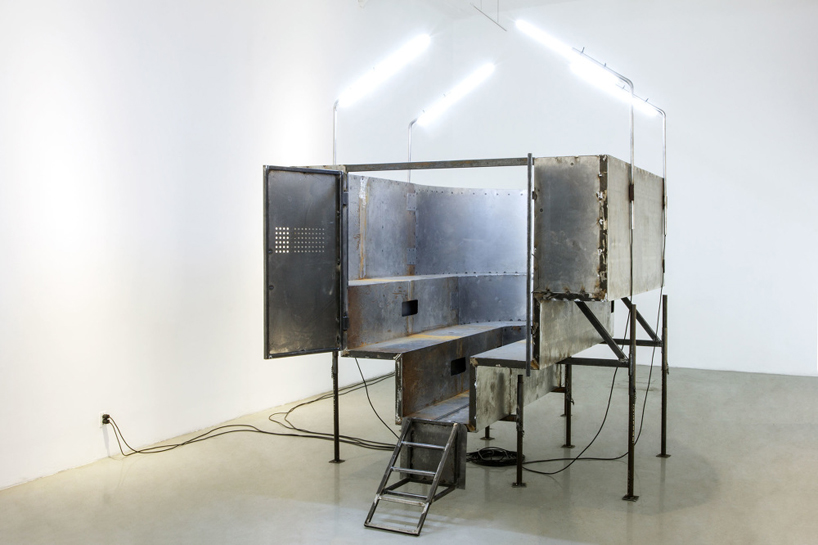
‘democracia portátil’
DB: can you tell us about your ‘democracia portatil’ project?
DF: I was coming from the mobile home and the paranoia of the migrants, everyone doing walls and fences, etc. america is the land of movement because it is a country made of immigrants and I have always been interested in the nomadic body. so I took that and decided to take a particular gesture were I plugged a house into a car and the house can be plugged and unplugged at any moment, allowing the car to be a house or a car whenever it wants. the car is not a mobile home, the house is actually only an extension of the car, so the car is still the car. so we designed this type of cold structure that recalls money trucks, cars that carry prisoners, etc. so I wanted to show how democracy ideas are fragile and need to be protected. and the only way to make them survive is as the nomadic house in america. america, probably one of the most young countries in the world, was created with the idea of all living together, building together. maybe the 70’s in the US was part of this industry that served this type of idealism. so I wanted to put all these together to make an object that would be the contrary of protective, defensive, unfriendly, but at the same time to discuss and be protected inside of it.
in this case the project was about the social body.
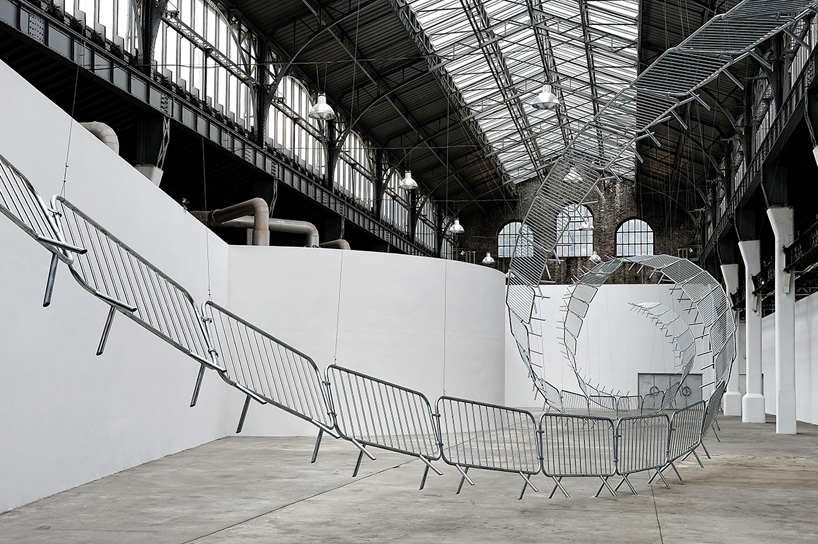
DB: which project do you think is about bringing people together?
DF: my ‘vortex populi‘ installation has been also linked with the same topic of bringing people together. with point break I wanted to break a barrier where there are two points that you cannot cross. so I twisted them and generated the crossing points. I like it because it’s more metaphorical and has a nice aesthetically result.
DB: in this particular piece you use elements that already have a lot of connotations to them. by applying the simple gesture of twisting them, you break them.
DF: with the twisting, I brought a new significance to the object and was able to discover what is behind and opened the possibilities to what it can be.
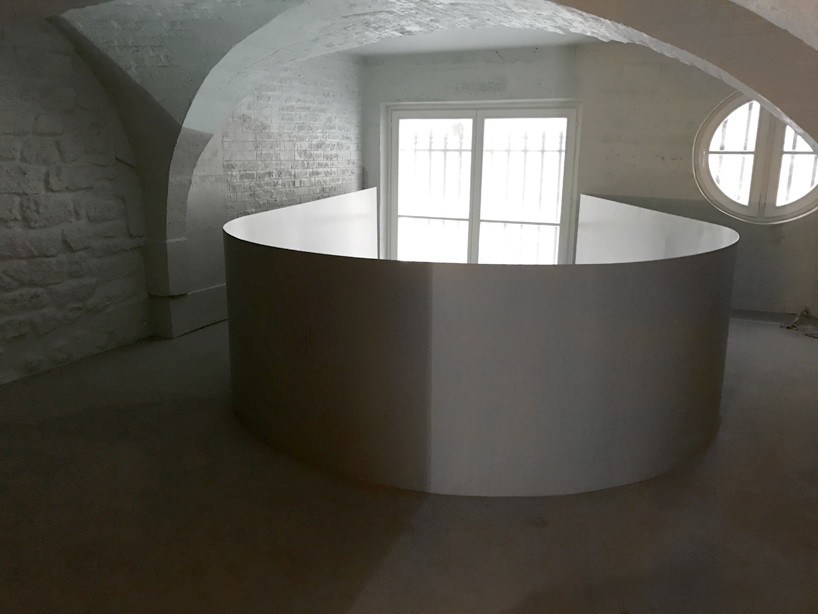
image © designboom
DB: do you have a favorite city?
DF: paris and lisbon are the two cities where I live, my base. I like conflicted cities, the ones where I can feel a bit in danger. before I used to say sao paulo and los angeles were my favorite cities. because they were cities where the body itself is part of the growth of the city. in LA the body doesn’t move, or is moved constantly by something that is not itself. in sao paolo there is another kind of body, because is the body of the paranoia. after that I started to be fascinated by seoul and new york. but this all came from moments in my life, it’s like falling in love. I like mexico now, very much, very much, very much.
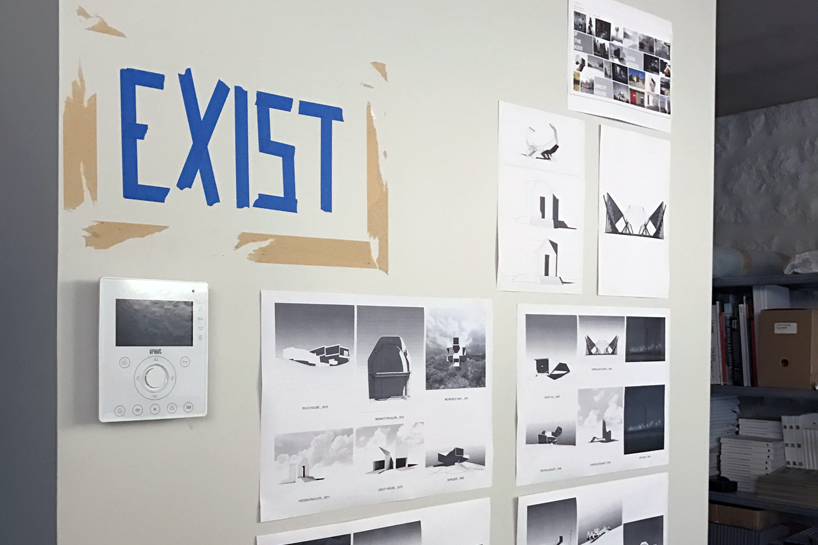
image © designboom
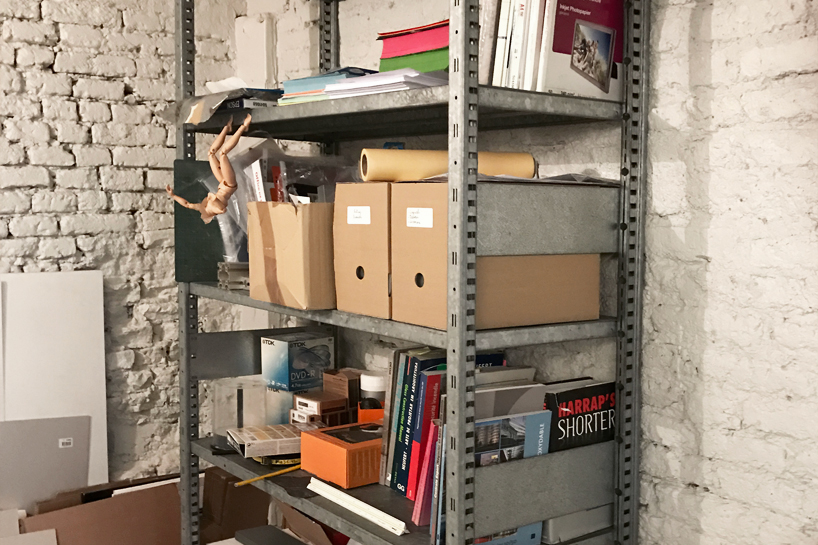
image © designboom
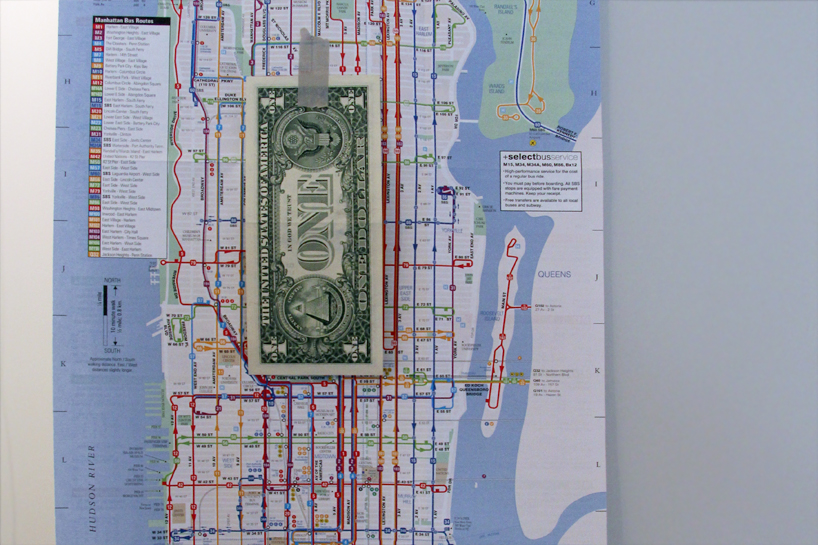
image © designboom
happening this week! holcim, global leader in innovative and sustainable building solutions, enables greener cities, smarter infrastructure and improving living standards around the world.
architecture interviews (274)
didier faustino (20)
studio visits (115)
PRODUCT LIBRARY
a diverse digital database that acts as a valuable guide in gaining insight and information about a product directly from the manufacturer, and serves as a rich reference point in developing a project or scheme.
